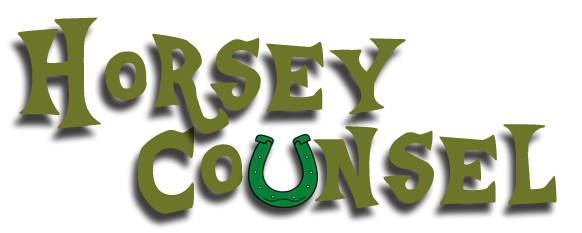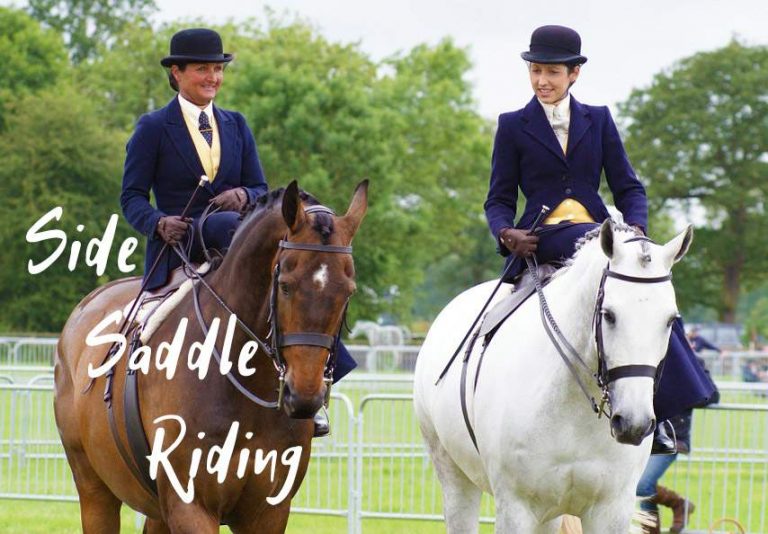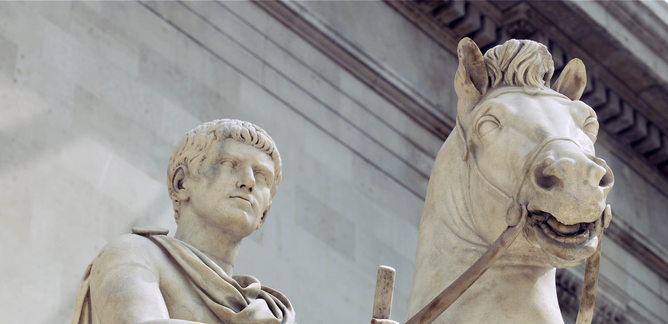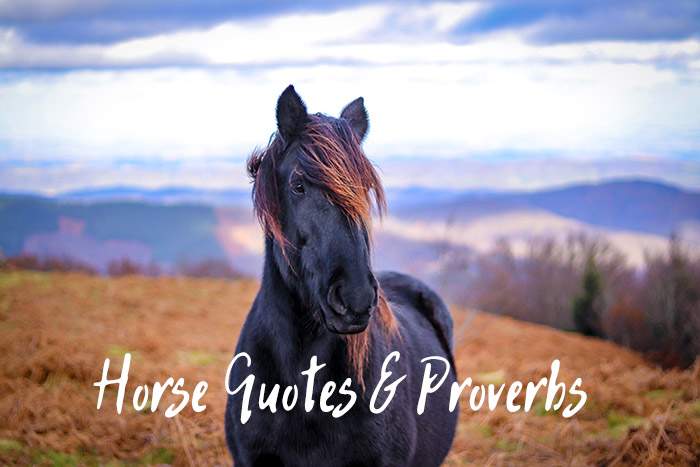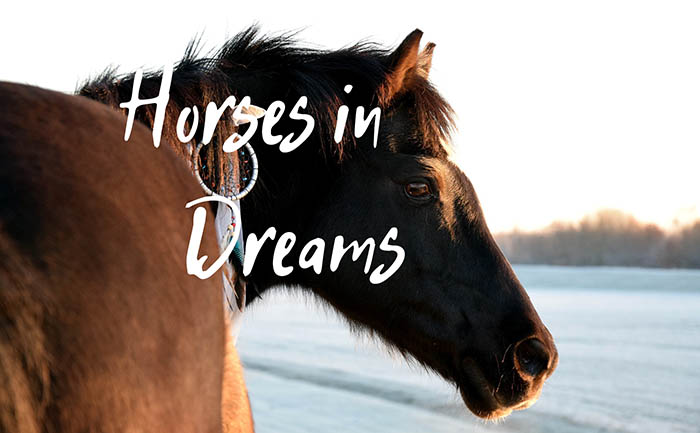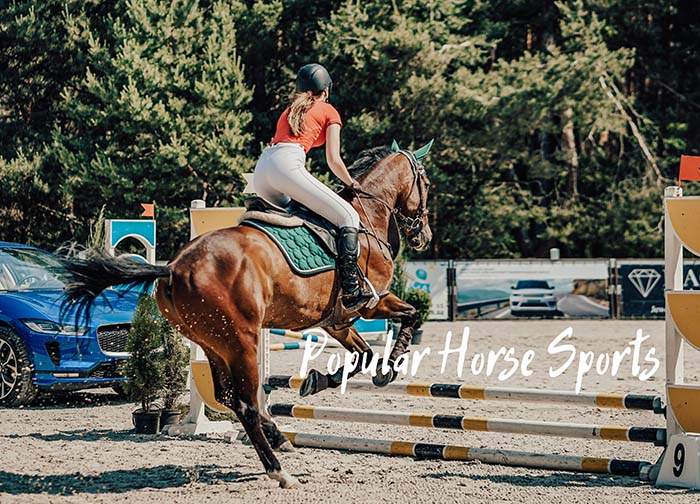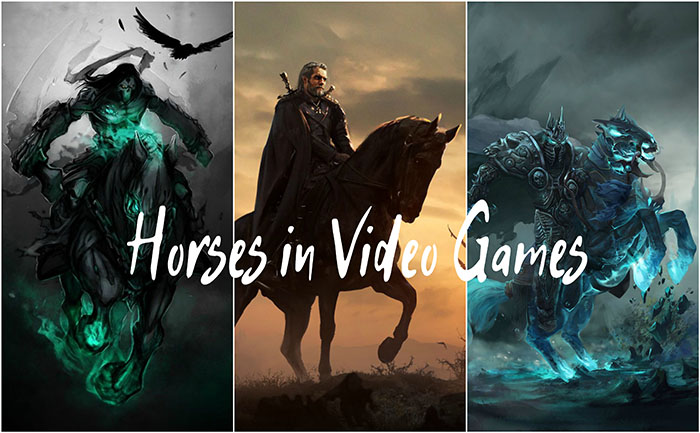Horse Terminology and Jargon – A Complete Guide
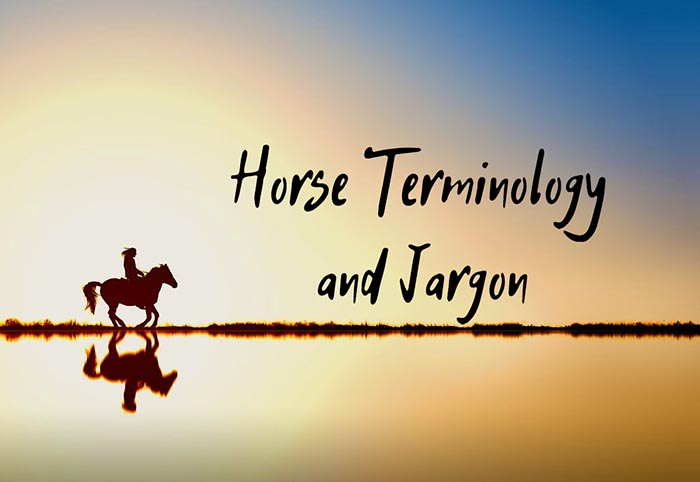
Living around horses my entire life, I’ve picked up on a generous selection of horse jargon and specific horse terminology that’s not used in any other field. While working with horses, we tend to use specific words and expressions that would sound very unfamiliar to a visitor or outsider.
Some horse jargon or lingo is known all over the world, as it was popularized by movies, music, and books. However, a complete list of horse terminology comprises words and expressions that are only heard around the stable, in the fields, or in the training pen. So I decided to put together such as list – as comprehensive as I could so that you might be able to familiarize yourself with as many horse-related terms as possible.
The following list is broken down into multiple segments for different categories of words and expressions. Moreover, each term is explained in plain words. I hope you’ll find this list useful.
Horse gear terms.
Tack – The equipment we use on horses for riding, training, and events. Horse tack includes saddles, bridles, and pads.
Saddle pad – Also known as a saddle blanket. It’s basically a pad that goes underneath the saddle for extra cushioning.
Lunge line – We use it for training. It’s a long rope that we use to move horses around in a circle in a training pen. A lunge line can also be used for other training sessions. For instance, we use it to teach horses how to ground tie.
Rig – Different term for a saddle.
Bridle – A type of headgear that allows us to control horses while we ride them. A bridle comprises a headstall, the bit, and reins.
Rein – It’s a leather line that goes from the horse’s mouth to the rider’s hands. We use it to guide the horse.
Halter – Similar to a collar. We use it to control horses during groundwork.
Bit – Goes into the horse’s mouth, and it can be made from leather or metal. I prefer the leather ones.
Billet – Only used on English saddles, they link the girth to the saddle.
Breast collar – Piece of horse tack that prevents the saddle from sliding back.
Cinch – It wraps under the horse’s barrel and links to the saddle. Its main purpose is to prevent the saddle from sliding from the horse’s back. This is a western equestrian term.
Browband – A leather piece that goes above the horse’s eyes and under its ears.
Curry Comb – A comb specifically designed to remove dirt from a horse’s coat while bringing the skin’s natural oils to the surface.
Cooler blanket – A blanket that helps keep a horse’s temperature in check by wicking sweat away from its body after an intense workout.
Hoof pick – Used by farriers to pick out the dirt from a horse’s hoof.
Fly mask – Protects the horse’s eyes from flies and UV radiation from sunlight. The eye covers are basically nets with small openings that allow the horse to see through them.
Fly blanket – Also known as a flysheet, it goes over the horse to protect it from flies and other pesky insects.
Latigo strap – A western tack term, it can be used to fasten up the cinch.
Noseband – Only used on English bridles, it wraps around the horse’s nose and has a fastening mechanism underneath.
Stirrups – Very important tack piece. They help keep the rider in place while on horseback. They attach to the saddle and hang around the lower sides of the horse. You place your feet in them.
Sweat scraper – You use it to scrape away sweat from a horse’s coat. Horses sweat a lot after an intense workout, and this tool can help them cool off faster.
Horse marking terms.
Bald face – A horse with a bald face will have a very wide and white patch of hair that extends to or past the eyes.
Snip – White marking that covers the horse’s nose.
Faint – A small marking that never goes away. It usually has white hairs but no underlying pink skin.
Blaze – White stripe that extends vertically along the horse’s face.
Bay – A bay horse will have a dark brownish body color as well as a black muzzle and legs.
Buckskin (horse color) – A shade resembling tanned hide.
Dappled – A dappled horse has various patterns on its coat, usually consisting of half-circles that stand out from the rest of the coat.
Dun – A dun horse is a tan-colored horse.
Tobiano – Pinto marking with patches of white that stretch from the back of the horse to its sides.
Socks – Horses with socks have white markings that stretch from the hoof to the fetlock area.
Sorrel – Beautiful horse coloring. The coat looks reddish or sometimes orange.
Chestnut – Reddish coat color of a horse.
Palomino – Genetic color in horses, consisting of a gold coat and white mane and tail.
Paint – Short for American Paint Horse. A horse breed with pinto markings.
Pinto – A horse with white patches on its base coat.
Horse medical terminology.
Anticor – An anticor refers to a dangerous swelling or inflammation in a horse’s breast. Also known as anticoeur or avant-cœur.
Bone – A horse with good “bone” has decent-sized bones as well as a very good bone density for its breed and age. By measuring a horse’s bone, veterinarians can determine its ability to carry weight. A horse with poor bone will be weaker than one with good bone.
Choke – A horse that is choked will still be able to breathe but won’t be able to eat because its throat is blocked. A serious medical condition that requires a quick response.
Tied up – A tied-up horse suffers from muscle cramps, particularly in its back and hind areas. The horse is usually in quite a bit of pain, as the muscles contract and spasm uncontrollably.
Floating teeth – Teeth floating is a medical procedure that involves filing down a horse’s teeth. The procedure is necessary when the outer edges of the teeth have become sharp and cause ulcers and sores in the mouth.
Thrush – A fungal infection that affects the horse’s hoof. Horses most vulnerable to this condition are those that stand in manure or dirty pools of water for extended periods of time.
Bowed tendon – If your horse has a bowed tendon, its tendon didn’t heal properly from an injury and now appears to be bowing out.
Colic – Serious medical emergency caused by ingestion of dirt, dehydration, poisoning, gas, or stomach ulcers.
Coggins test – A test that determines if the horse is infected with Equine Infectious Anemia. This test is mandatory for numerous equestrian competitions.
Farrier – A farrier specializes in working with a horse’s hooves. He applies horseshoes and can even perform corrective shoeing if necessary.
Heaves – Inflammation of the respiratory system due to allergies.
Proud flesh – Patch of pinkish overgrown granulation tissue that covers the skin surrounding a leg wound. I wrote an entire article about proud flesh. Make sure to check it out if you’re interested in learning more about this condition.
Proud cut – A gelding that has been neutered late in his life, maybe after he was used for breeding. The proud cut is basically some leftover testicular cord from the procedure.
Ewe neck – A neck that has a concave shape instead of a regular arched one.
Hard keeper – A horse that has issues keeping its body weight in check and has a tendency to become thin.
Cast – A downed horse that’s unable to get back up on its own.
Lame – A lame horse can’t walk or run properly anymore because it experiences constant pain in one of its legs.
Splint – Swelling on the splint bone due to trauma or excessive training/working.
Laminitis – Disease of the horse’s hoof. Tissues between the hoof wall and the interior bones are breaking down.
Stocked up – A horse with stocked up legs is stiffer than usual, and its legs appear swollen. This condition is caused by inactivity and poor blood circulation.
Hives – Similar to human hives, they are bumps with fluid on the horse’s skin. They are caused by allergic reactions or poisoning.
Horse anatomy terminology.
Yearling – A horse that is one year old. A very young horse.
Weanling – A young horse that has been separated from his mother. Weanlings are usually around 6 months old, and the separation is necessary for the young horse to learn how to fend for itself.
Withers – We measure a horse’s height at the withers. This is the ridge that goes between the horse’s shoulders
Mare – A female horse.
Muzzle – A horse’s nose.
Stallion – A male horse that can breed and produce its own offspring.
Stifle – Generally refers to a horse’s knee. It represents the joint that links the upper and lower parts of a horse’s leg. The interesting thing about the stifle is that it’s not easy to spot with the naked eye, particularly if you’re not a vet.
Filly – Young female horse, generally younger than 5 years.
Foal – Young horse that still relies on its mother’s care and protection.
Forehand – The front half of a horse.
Haunches – The rear half of a horse.
Dock – The dock is where the outer part of the horse’s tail starts. It’s the place where the horse’s vertebrae extend past the body to form the tail.
Feathers – A feathered horse has particularly hairy hoof and leg areas.
Fetlock – The fetlock is the horse’s ankle.
Gelding – A neutered male horse.
Hand – We use hands to measure the height of horses. One hand is 4 inches long in this case.
Winded – A winded horse has lung damage from being overworked.
Frog – Triangle-shaped tissue located in the horse’s hoof.
Pastern – The part of the horse’s leg between the hoof and the fetlock.
Poll – Part of the neck behind the horse’s ears. Riders use two pressure points on the sides of the poll in order to command their horses to bring their heads down.
Equine – The horse species in scientific terms.
Barrell – A horse’s torso is called a barrel. In human terms, it would be the ribcage.
Colt – An un-neutered male horse until the age of 4.
Crest – The part of the horse’s body that the mane grows from.
Conformation – It refers to the horse’s overall physicality. A horse with good conformation will have proper body proportions for its breed and age. Horses with bad conformations have damaged bone structures.
Cannon – A horse’s calf area, which extends from the knee to the ankle.
Coronet – The layer of skin that the hoof grows from.
Horse riding terms.
Aids – Giving aids is giving signals to a horse using voice, hands, legs, and body weight.
Gait – A horse’s gait represents the way it walks and runs. There are four main gaits in English riding, namely walk, trot, canter, and gallop. Western riding also includes two more gaits named jog and lope. For more information about horse gaits and gaited horse breeds, head over to my separate guide right here.
Trot – Two beat gait that comes after the walking gait.
Canter – Three-beat gait that comes right after the trot.
Gallop – Four beat gait. The fastest gait a horse can perform, and arguably the most spectacular.
Hand gallop – A more controlled version of the standard gallop.
Lope – Three beat gait similar to the canter. Only available in horses trained in western riding disciplines.
Jog – Two beat gait similar to the trot. Only practiced by horses trained in western riding disciplines.
Posting – A rider that posts will sit straight and firm on a horse’s back as it walks at a trot. This is done in order to prevent bouncing.
Turn on the haunches – A horse turns the haunches when it pivots its body around its hind legs. The hind legs stand in one place and the horse moves only its front legs in order to pivot.
Turn on the forehand – A horse turns on the forehand when it pivots its body around its front legs. Its front legs stand in one place and the horse moves only its hind legs to pivot.
Half halt – Technique that involves putting slight pressure on both reins. This is done in order to balance and collect a horse that has strung itself out while under saddle.
Deep seat – Advanced technique that has the rider placing his weight on his seat bones in order to be able to move in unison with the horse.
Quiet leg – A rider with quiet legs will move his or her legs only slightly while riding. An inexperienced rider is likely to move its legs and feet around quite a bit, potentially kicking the horse without meaning to. Having quiet legs is a sign of experience in the saddle.
Busy with the legs – An inexperienced rider will be “busy with the legs” or “unsteady in their legs” as he moves his legs too much while in the saddle.
Heels down – Keeping your heels down is a sign of experience in the saddle. Anyone who knows how to ride properly will have developed a deep seat, will have a quiet leg and will keep his heels down. Keeping your heels down in the stirrups means that your heels should be closer to the ground than your toes.
Equestrian disciplines terminology.
Showjumping – Singular class in horse shows or part of an eventing competition. A timed event in which the rider and horse need to go through a specific obstacle course and perform a set of jumps.
Cross country – Complex English riding discipline that has the rider and horse gallop through a preset path while facing numerous obstacles. These obstacles can include jumps, banks, ditches, and water obstructions. In cross country events, the judges assess the horse’s stamina, as well as its bravery.
Dressage – The highest level of training that a horse and rider can aspire to. The pair usually perform a predetermined test in front of a judging panel whose members will assess the horse’s willingness to perform, grace, and overall level of training.
Cutting – A horse and rider separate a cattle from its herd by “cutting” it from the herd. While a very useful skill to know by ranchers, it can also be performed in front of a panel of judges in various Western shows.
Eventing – Equestrian discipline that comprises three separate events: show jumping, dressage, and cross country.
Equitation – In equitation, the panel of judges rates the rider exclusively, and not the horse. The judges pay attention to the rider’s position and to his or her ability to communicate efficiently with the horse.
Reining – The western correspondent to dressage. During a reining event, the horse is guided by its handler through various patterns such as circles, halts, backs, and spins. This showcases the horse’s level of training as well as the rider’s ability to control the horse.
Parelli – Horses trained in the Parelli method go through training regimens that are considered as natural as possible.
Pleasure – Available in both English and Western shows, pleasure riding assesses the horse’s overall way of going. Judges determine how pleasurable a horse is to ride and they rate it accordingly.
Groundwork – Training regimens performed exclusively with the rider on the ground and not on horseback. Groundwork represents the foundation of all horse training, as it establishes the relationship between rider and horse.
Gymkhana – A Gymkhana event involves teams of riders that compete against each other in timed events.
Foxhunting – Very old English custom that has hounds and herds of horses tracking foxes on private grounds. Today, in the States, we use artificial scents in order to stir these hunts, as the primary purpose of foxhunting is not to hunt foxes but to keep horses in shape.
Lunge – To lunge a horse means to work with it on the ground using a lunge rope. I wrote an entire article about lunging horses, so make sure to give that one a read if you’re more interested in this technique.
Horsemanship – A class in which riders need to demonstrate their ability to control and handle a horse. Predominantly popular in western shows, the handler needs to assess its ability both on the ground and in the saddle.
Hunt seat – A type of English riding class that requires the rider to have a “light seat.” This means that the rider will not sit as deep as a dressage rider would, for instance. During a hunt seat event, riders will perform hunters and equitation classes on the flat and over fences.
Other horse jargon and horse terminology.
At grass – A horse that is at grass is pastured year-round and one of its main sources of nutrition is grass.
Rail – The rail refers to a fence, wall, or any outer barrier of an arena. Keeping a horse “on the rail” means not allowing it to go near the center of the arena.
Soft hands – Having soft hands as a rider means having the ability to keep your hands “soft” as you steer, stop or provide any aid to the horse through its reins. Only the most experienced horse riders have soft hands, and that’s because this skill requires a fair bit of confidence in the saddle as well as many years of practice. A new and fearful rider will have much stiffer hands on the reins.
Discipline – In the equestrian world, a discipline refers to a type or style of riding. Some notable examples include dressage, eventing, western, trail riding, and hunter jumper.
Balk – A horse will balk when it refuses to listen to its handler’s commands. It might refuse to move altogether, or it might refuse to obey a specific command.
Blue roan – A blue roan horse has a black base coat complemented by white hairs. This gives the coat a beautiful blueish appearance. If you would like to learn more about blue roan horses and what makes them so special in the equine world, have a look at this article that I wrote specifically on the subject.
Box to – Leading a horse up a ramp and into a trailer or horsebox.
Broodmare – A broodmare is a female horse that is kept on the property specifically for the purpose of breeding. It’s basically the female equivalent of a stallion.
Buck – A horse that bucks will keep its front legs on the ground and will kick with its hind legs.
Bronco – A bronco is a horse that bucks off cowboys in a rodeo show.
Draft – A draft horse is a horse that’s usually put to work in farms or ranches. These horses are cold-blooded, they’re slow, and they usually have a willingness to work.
Dam – A dam is a mother horse. A horse that has foaled offspring.
Chaff – Chaff is hay that has been finely cut in order to add some bulk to the horse’s feed tray.
Groom – To groom a horse means to clean it. It usually refers to the act of cleaning a horse’s coat using brushes or other tools.
Horn – A part of the saddle. In the past, vaqueros would control cattle by use of a rope around the neck of the animal, tied or dallied (wrapped without a knot) around the saddle’s horn.
Irons – Also known as English stirrups. They attach to the saddle and support the rider’s feet.
Jockey – A jockey is a person that rides horses in races.
Jodhpurs – Also known as breeches or English riding pants. Tight-fitting trousers that reach the ankle and end in a snug cuff. These types of pants are used almost exclusively for horse riding.
Light horse – A light horse is one that’s used primarily for pleasure riding and or driving. These horses will never be used for pulling loads, simply because they don’t have the body for it or because they’re not trained for this type of activity.
Mucking out – One of my least favorite activities. To muck out means to clean out a horse’s stable.
Pony – A pony is a horse that measures less than 14.2 hands in height. If you would like to learn more about the world’s smallest horses, I’ve written an article on this specific topic as well. Feel free to check it out!
Showing – This activity involves competing with horses for various prizes, whether we’re talking about money, ribbons, or points.
Transition – In horse riding, a transition represents a change in gait.
Turn out – To turn out a horse means to bring it out to a pasture.
Cold backed – A cold-backed horse arches its back and may buck slightly when mounted for the first time.
Double bank – To double bank means to carry an extra person on a horse’s back.
Four-in-hand – This is a team of four horses that have their reins joined into a single pair of reins. This way, the driver can control all of them at the same time. The number can be multiplied, in which case we would have six-in-hand, eight-in-hand, etc.
Green broke – A green broke horse has just begun its training and is not very good with riders. The term usually references horses that have been ridden under the saddle at least a few times.
Hinney – a hinney or hinny is the offspring of a male horse and a female donkey. The animal is usually sterile, and it is less desirable than a mule.
Horseshoe – Curved bar attached to the underside of the wall of the hoof, to prevent wear and provide grip. Horseshoes are applied and maintained by farriers.
Pedigree – A horse’s pedigree is its documentation. A written pedigree chart outlines the lineage and heritage of a horse.
Purebred – A purebred horse has documented parentage recognized by a breed registry. Moreover, it descends from recognized foundation bloodstock and doesn’t have an admixture of breeding from lines outside those of the breed in question.
Feral horse – A feral horse is free-roaming and lives in wild conditions. However, it descended from domesticated horses. Some of the most notable feral horse breeds include the American Mustang and the Australian Brumby.
Foundation sire – All members of a particular breed of horse trace their ancestry to a foundation sire. For instance, Darley Arabian is the foundation sire for the Thoroughbred breed.
Furlong – In flat horse racing, distance is measured in furlongs. One furlong is one-eighth of a mile or 220 yards/200 meters.
Outlaw – Not a very common term. Outlaw when referring to a horse means a horse that cannot be handled by humans on account of its viciousness. Usually, outlaw horses have suffered through traumatic events or cannot be tamed due to illness.
Sidesaddle – Riding a horse sidesaddle means keeping both legs to the near side of the horse, rather than with legs astride. There are specific saddles made for sidesaddle riding. You can learn more about this unique form of riding horses in my separate article right here.
Team – A group of horses is generally referred to as a team.
Xenophon – Also known as the “father of classical horsemanship.” Greek cavalry officer, historian, and political philosopher who wrote a very famous manual named On Horsemanship. The manual outlines specific training methods for horses that are as humane as possible.
Unsound – An unsound horse has specific health issues such as lameness or other health problems. Unsound horses are usually not fit for work or riding.
Unshod – A horse without horseshoes is unshod. Think of it as barefoot.
Substance – When asserting a horse’s substance, we analyze its overall muscularity, as well as bone quality and width and depth of body.
Studbook – Also known as breed registry. A studbook contains a list of horses from a particular breed whose parents are known and registered. An open studbook permits parents from different breeds but the horse needs to conform to the breed’s standards in order to make it into the registry.
Sour – A sour horse is not very happy when being ridden. Horses generally become sour when they’re overworked.
Sire – A horse’s father.
Smooth mouth – A horse with a smooth mouth has worn out the indentations or “cups” from its incisors. A horse with a smooth mouth is not a young horse, as this wearing out usually occurs by the age of 8.
Paddock – A fenced enclosure for keeping horses or the place where racehorses are mounted before a race.
Martingale – Tack piece used for riding and driving. It’s generally used on horses to control head carriage.
Yellow horse – Mostly used in Western riding, it refers to a palomino horse.
Typey – A typey horse conforms to its specific breed standards.
